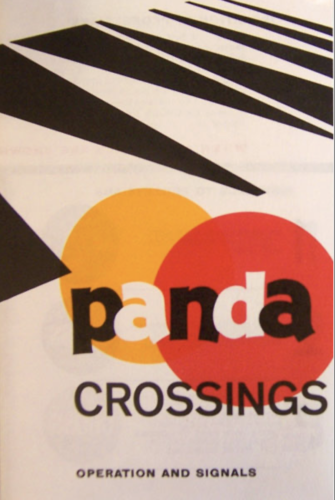First panda crossing causes chaos at Waterloo in 1962
On April 2, 1962, new road crossings caused chaos outside Waterloo station, with pedestrians and drivers left utterly confused by the flashing lights and triangular markings.
The new style of pedestrian crossings were called Panda Crossings. They were introduced by the Minister of Transport, Ernest Marples, as a first attempt to replace the zebra crossing – which had been launched in the 1950s.
But, the official launch of the first Panda crossing in York Road, opposite Waterloo Railway Station, was met with a mix of confusion and dismay among the public.
Mr Marples took the first steps across the new crossing – carrying a toy panda – accompanied by the Mayor of Lambeth, Albert Charles Dennis. Others were not so cheerful.

One particularly unhappy old lady – who was one of the first pedestrians to use the new crossing – told the BBC at the time: “That man Marples is up to too many tricks.
“It’s a hairbrained scheme and most dangerous.”
The panda crossings were activated when a pedestrian pressed a button to light up a “wait” sign. This triggered a flashing amber light to warn drivers to stop.
After five seconds, a pulsating red light signalled the driver to stop and a “cross” sign was illuminated to indicate to pedestrians that it was safe to cross.
Eight seconds later the red light was replaced by a flashing amber light and at the same time the “cross” sign starts flashing, at first slowly and then faster to warn the pedestrian that their time to cross the road was running out.
After 17 seconds both lights disappeared and cars were free to pass through.

It was not only pedestrians who were left baffled by this systems. Drivers found themselves almost incapable of working them out, with a half-mile queue forming at one crossing in Croydon because, according to an RAC patrol man, “none of the drivers knew when to move”.
Seeing the poor response to their new idea, police and road safety groups launched a huge campaign, convinced that once people understood the new system it would be much safer than the uncontrolled zebra crossings.
In the key trial areas including Guildford, Lincoln and London, a 60-second video was shown in cinemas to promote the crossings and every schoolchild got an information leaflet to explain the different signals.
But the campaign was rendered futile as more and more lights faltered and flickered across the country.

A fuse even blew in one of the lights at a crossing in Surbiton, Surrey, just one hour after it was installed by the town’s Mayor.
In a last gripe to sustain the panda crossings, the Ministry for Transport announced a modification a week after the launch – to distinguish between flashing and pulsating lights.
But, the scheme was eventually abandoned in 1967, with Mr Marples finally admitting the idea had been “too complicated”. Only 45 panda crossings had been introduced.
Two years later, in 1969, the Pelican Crossing was launched – a more sophisticated and successful traffic light system which still remains today.
These were joined in the 1990s by Puffin Crossings, which used sensors to detect pedestrians and control the traffic lights.
Pictured top: Ernest Marples, Minister of Transport, and Mayor of Lambeth, Albert Charles Dennis, take the first steps across the Panda pedestrian crossing in York Road, outside Waterloo Station (Picture: PA)
